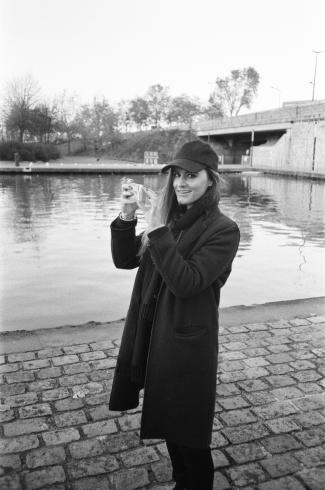Celebrate Beltane with Bianca Bondi | Exhibition Au-delà
Bianca Bondi's multidisciplinary practice involves the activation or elevation of mundane objects through the use of chemical reactions and often develops in relation to the site within which she works.
The materials she works with are chosen for their potential for transformation or their intrinsic properties, highlighting the interconnectedness of things in the world, their transience, and revealing the cycles of life and death.
Her work has been exhibited at Lafayette Anticipations (2023); Fondation Louis Vuitton (2021); Fondation Carmignac, Porquerolles (2021); Casino Luxembourg (2020); Pera Museum, Istanbul (2020); BOZAR, Brussels, (2019), and in the Biennales de Lyon 2019, Busan 2020, and Thailand 2021.
Transcript
Hello, I’m Bianca Bondi, I’m a South African artist based in Paris.
I do celebrate Beltane. I actually used to have a coven in Paris, and that was really lovely, we would celebrate together, and I find it so much nicer to have a community. Unfortunately, that kind of disintegrated over time, so I’m looking for a new coven if anyone is offering.
So Beltane is a celebration very similar to Halloween. It's actually the opposite. We know that at Halloween the veil between the livings and the deads is at its finest, it’s a time of darkness, while Beltane is coming into the light, so it’s also the moment the veil is the finest but you ripped what you sewed at Halloween so it’s when everything is coming towards the light, it’s really a celebration of regenerative energy, of the bond of the sun. It’s a festival that is celebrated on the first of may.
So the symbolism of the material used is quite vast but the materials are very simple. You have salt, which in this instance, is most important for protection and making sure we have a very pure energy. We have the burned wood, which is a false acacia tree, and then we have the quartz. The quartz is probably the most essential in this piece because I really like this idea of harvesting energy that comes from within the ground, something that is born of oxygen and silica, or breaths from a thousand years ago and that has been born in obscurity but that has been lifted up into that sort celestial energy. We also have thistle flowers which appear menacing but are also very protective, we have these bowls, which contrary to the crystal of quartz, you have the newest crystals being born, the salt crystals. I like this contrast between ancient and new energies. The bowls are actually made of a special liquid which is salt water, and they have milk of a first born son, along with other ingredients made in the light of a full moon. What else do we have ? I think that’s about it. That's essential.
So this idea of crystallization in my practice is a way of really connecting with the space, because I usually work with the elements that are liquid at the start of a show, and then the crystal transforms throughout. And what I appreciate is that this means the crystals are forming with the air of the space in which it is so it’s really a unification of the unseen, the invisible, in the space where the work is to be completed. I like the idea that a work is moist at the beginning and as time goes align the meaning and the energy of the work is near the completion and it’s really completed with the presence of the spectators, the warmth, the quality of the air, all these sorts of things.
